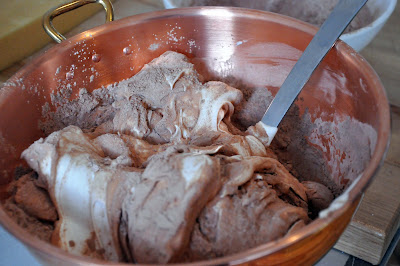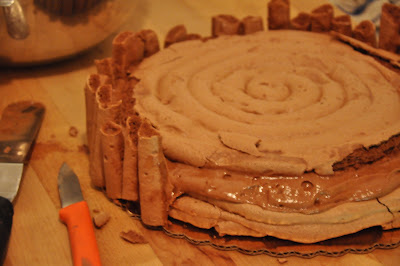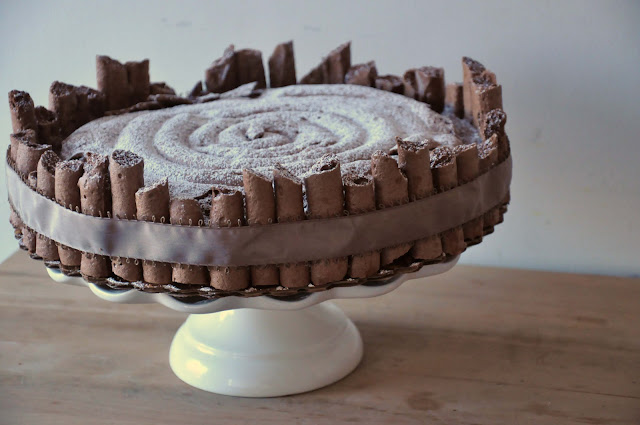Just when I think I know it all, I discover something new. One of my brides-to- be made a special request for alfajores, a cookie she’d fallen in love with when she was living in Argentina. She described them as macaroons filled with dulce de leche and right away I was intrigued- I’ve had my own love affair with the sweet caramel stuff for years.
You couldn’t have convinced me there was anything better, and then in 1997 Haagen Dazs rocked my world with a new flavor inspired by a longtime Latin favorite, dulce de leche. Here was the best substance on earth transformed into something even more lovely and delicious! They’ve been enjoying dulce de leche south of the border forever, and it turns up in everything from cakes to custards to tarts- as a filling, as a sauce, and even on its own. And here in the States it's now as common as caramel sauce... But I’d never heard of alfajores, so I did a little research.
Turns out alfajor is an old Spanish word from the Arabic alfajua meaning honeycomb, and in the old country it’s a rolled log made from ground nuts and honey. The word made it across the ocean, if not the actual confection. The South American's have many variations of alfajores, but most are some type of cookie sandwiched with mousse or jam or dulce de leche, and they are wildly popular. They can be dipped in chocolate or rolled in coconut flakes or dusted with powdered sugar, and they come in all sizes from one-bite to some as big as saucers.
I went the simple route with thin shortbread cookies filled with a spoon of thick dulce de leche, dusted with powdered sugar. The results were amazing, the crumbly cookie melts right into the sweet silky caramel, a miracle of taste and texture.
Alfajores
2 c flour
½ c powdered sugar
8 oz butter, cold and cubed
½ t fine salt
The dough is very simply made by throwing everything into the food processer. You’ll note there’s not a lot of sugar in these cookies- they are almost salty on their own which makes them the perfect vehicle for the sweet dulce. The dough is soft and more like a paste, so you’ll have to chill it hard before you attempt to roll it out.
Cut out the cookies and bake until they are golden at the edges, and let them cool before you fill them. They won't spread or rise too much so you can place them close together.
There are many ways to make dulce de leche- you can heat sweetened condensed milk over a double boiler for nearly an hour, stirring often, or you can bake it in a water bath covered with foil- there’s even a microwave method. But the easiest way I’ve found is to boil the can for two to three hours, then cool it overnight. When you lift the lid you will witness the magical transformation within, the tawny brown delight you’ve created. Now, they warn that this method can result in your cans bursting open- it hasn’t happened to me- yet- but I will caution to proceed at your own risk.
Spoon some dulce into the center of a cookie and gently press another one on top. These cookies are extremely fragile and I’ll admit I broke a few before I got the hang of it, I found handling them from the edges helped.
Dust with powdered sugar, or dip in melted chocolate if you’re feeling decadent. Enjoy these delights with coffee or tea, for dessert or breakfast, or a midnight snack, or a light lunch…


































